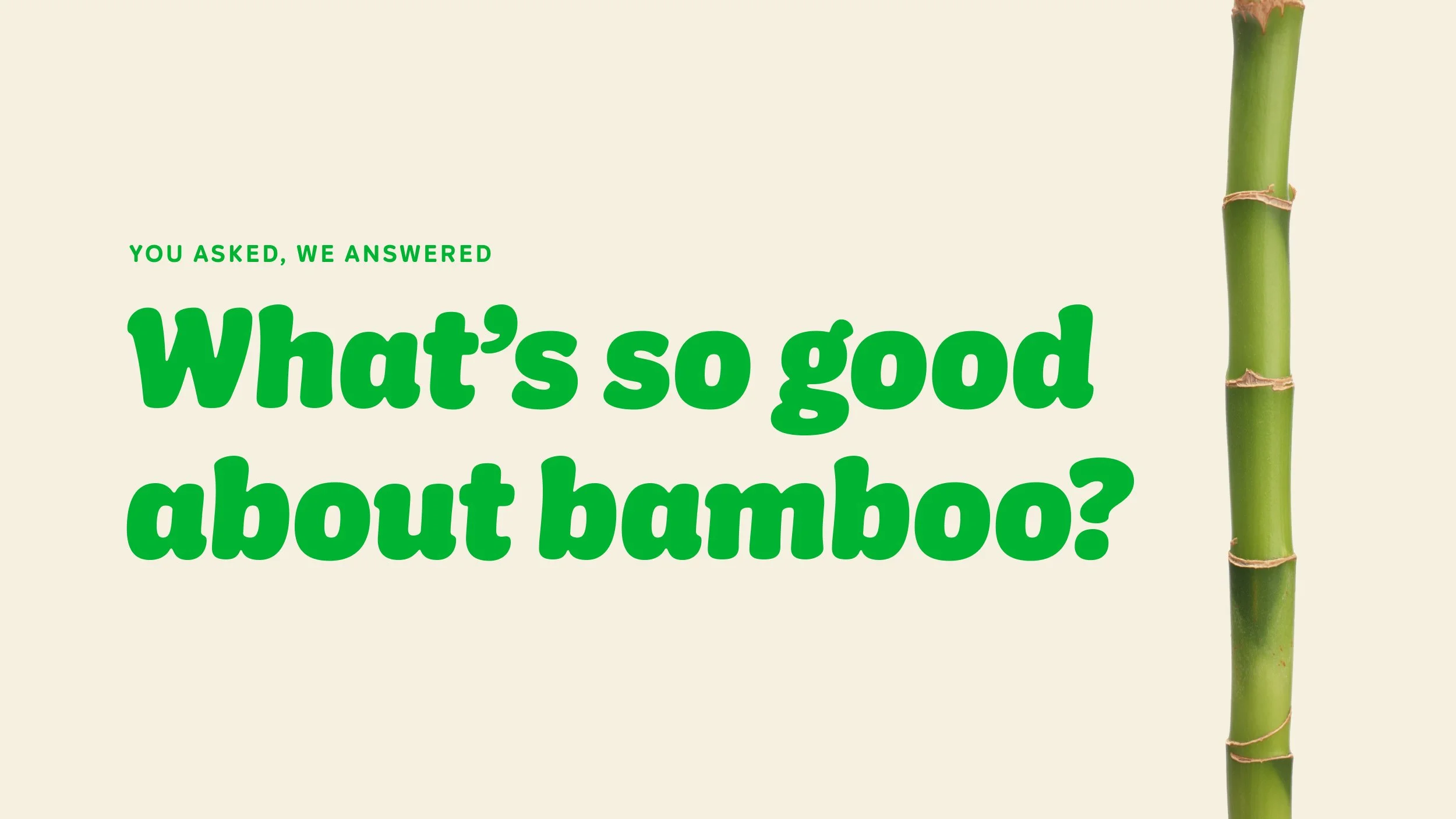We’re pretty proud to say that our toilet paper helps reduce deforestation one flush at a time. But we know it raises a whole bunch of questions about how our products and processes back up that claim.
In particular, we’ve noticed some uncertainty around our use of bamboo - one of our chosen alternatives to chopping down virgin trees. So, in the hope of giving you all the information you need to figure out the best way to wipe your bum, we’ve pulled together some answers to common queries we receive.
First up, what is virgin tree toilet paper?
Basically, virgin tree toilet paper means it’s made using fibres direct from trees, rather than from recycled or alternative materials.
You might also hear people talk about virgin forests, which are naturally occurring forest ecosystems that have grown for a long time - sometimes 100-plus years! - without human intervention. Sadly, a lot of the world’s toilet paper is made using trees cut from these old-growth forests, which can lead to mass deforestation and, thanks to all the carbon that’s released, can have a devastating impact on the climate.
But I thought toilet paper came from sustainably grown plantations?
Well, yes and no. Trees are definitely planted as crops for this purpose, but not always. And though native forests are generally protected from harvesting, illegal logging does still occur in some places. This is partly because of the pressure to produce more and more paper products like TP. And even legal logging is contributing to the global crisis - this report from the National Resource Defense Council explains it pretty well.
What makes bamboo a better resource than trees?
One of the major reasons bamboo is more sustainable than wood pulp is that it grows much, much faster (like, in three to five years compared to 10 to 40 years for trees). Which means it can be harvested much more frequently leading to the production of more biomass per hectare than slower growing tree plantations.
Why does that matter? Well, fertile land is a scarce resource, and the more of it humans need for things like crops and forest plantations, the more likely we’ll be to degrade or destroy natural wildernesses for this purpose.
Some people talk about bamboo producing more oxygen, removing toxins and needing fewer chemicals or fertilisers, but honestly, there’s not a lot of research to back that up, so it’s hard to know for sure.
In July 2023 we gained full FSC® Chain-of-Custody certification (C190271), meaning that our entire supply chain - from farm to warehouse - is FSC certified! All our tissue products, across all our markets, come straight from FSC-certified sources. It's a big win for supporting environmentally-friendly practices and helping keep our planet's forests thriving.
You can find our certificate in all its glory right here.
The Forest Stewardship Council® (FSC) is a globally recognised organisation that promotes responsible forest management. FSC certification ensures that products (like our tissue products line) come from responsibly managed sources. This means the entire supply chain adheres to FSC standards. Choosing FSC-certified products supports environmentally-friendly practices.
“Our FSC bamboo TP requires almost 90% less land per sheet to produce.”
If the material is so abundant, why is bamboo TP more expensive?
A lot of factors go into the cost of a product - the production process is just one piece of the supply chain puzzle. One thing to know is that most bamboo fibre prices are matched to the cost of wood pulp, so as the market fluctuates they move in tandem, even if the harvest costs are different. Welcome to irrational economics!
That said, when it comes to TP, it’s important to compare the price per sheet, rather than by the roll or pack. Our bamboo rolls come with 370 sheets and 3 ply (that’s about double a normal roll!), which actually makes them pretty similar - or in some cases cheaper - than many supermarket alternatives. Of course, there are lower cost options out there, but they might not include free home delivery, eco-friendly packaging, and help give access to toilets to those who need it, while they’re at it.
Where is the bamboo grown? Wouldn’t it be more environmentally-friendly to use local resources?
The bamboo used in our toilet paper and tissues comes from the Sichuan region of China. Local farmers grow it on the borders of their family properties to supplement their income. In fact, the whole process is very localised! Each village has its own bamboo co-op, and after the crops have been harvested, they get chipped and sent to local pulp factories (aka our suppliers).
Bamboo is hard to grow in many climates, so it can’t always be sourced locally. But we’re doing a lot of digging at the moment around local production and alternative fibres! Our environmental impact is so important to us, and we consider where we are today to be the starting point, not the end goal. We’re not resting on our laurels!
“Where we are today is the starting point, not the end goal.”
But what about the pandas?
The most common species of bamboo the giant panda eats is Fargesia spathacea Franch (in Chinese it’s jian zhu, meaning ‘arrow bamboo’). Pandas do eat other bamboo species, but not Neosinocalamus affinis, which is where our bamboo tissue comes from.
So you can rest assured: we don't take food from hungry bears.

